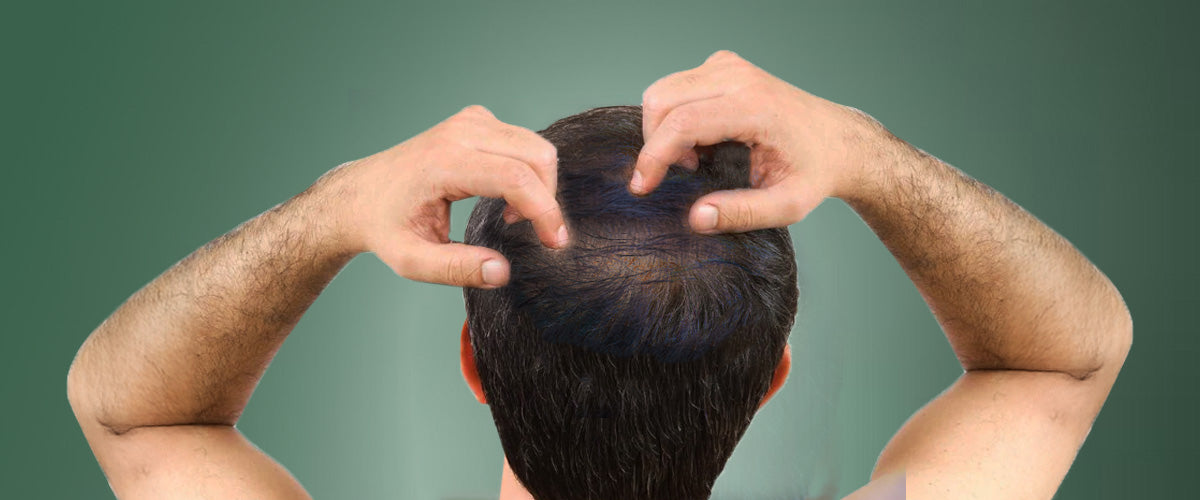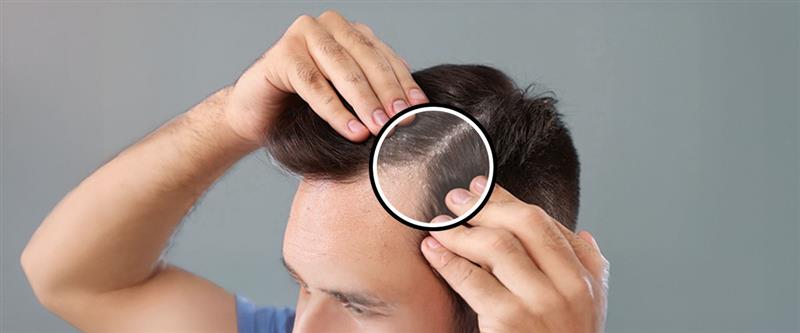Types of Alopecia: Different Types of Male Pattern Baldness
Evidence Based
All the information in this blog post is accurate, trustworthy, scientifically based and has been written and fact-checked by our experts and doctors.
Our licensed nutritionists and dietitians are committed to being objective, unbiased and honest, presenting all sides of the argument.
This article includes scientific references in brackets, which are clickable links to research papers from reputable academic organizations.

Alopecia is a medical term for hair loss. It can affect any area of the body with hair follicles, and various factors can lead to it, depending on the root cause. The Hair loss can be patchy or generalised depending on the cause. Below is a list of most of the causes of hair loss or alopecia.
Different Types of Alopecia
1. Androgenetic Alopecia (Male Pattern Hair Loss):
- Most Common: Affects over 50% of men and 30% of women at some point in life.
- Androgenetic Alopecia Causes: Primarily genetic, influenced by hormones like testosterone.
- Androgenetic Alopecia Symptoms: Gradual thinning and receding hairline in men, diffuse thinning on the crown in women. There are various stages of this kind of hair loss.
- Androgenetic Alopecia Treatment: Minoxidil, Finasteride, hair transplantation, laser therapy. The earlier it is tackled and treated, the better the results.
2. Telogen Effluvium:
- Second Most Common: Can affect anyone due to various triggers like stress, illness, childbirth, medication changes.
- Telogen Effluvium Causes: Sudden increase in hair shedding, disrupting the normal hair growth cycle.
- Telogen Effluvium Symptoms: Excessive hair loss, often noticeable in clumps.
- Telogen Effluvium Treatment: Usually resolves on its own within 6-12 months, addressing underlying triggers might help.
Read more about Telogen Effluvium Symptoms, Causes, Diagnosis and Treatment
3. Alopecia Areata:
- Relatively Common: Autoimmune condition causing patchy hair loss on scalp, beard, eyebrows, or other areas.
- Alopecia Areata Causes: Immune system attacks hair follicles.
- Alopecia Areata Symptoms: Round or oval bald patches, sometimes with exclamation mark hairs at the borders.
- Alopecia Areata Treatment: Corticosteroids, topical immunotherapy, JAK inhibitors. Sometimes, there may be no improvement with treatment also.
4. Cicatricial Alopecia:
- Less Common: Scarring hair loss where damaged follicles are replaced by scar tissue, preventing hair growth.
- Cicatricial Alopecia Causes: Various causes like burns, infections, autoimmune diseases, trauma.
- Cicatricial Alopecia Symptoms: Permanent hair loss in affected areas, sometimes with redness, scaling, or scarring.
- Cicatricial Alopecia Treatment: Limited options, sometimes hair transplantation might be possible.
5. Tractional Alopecia:
- Relatively Common: Hair loss caused by repeated pulling or friction on hair, like tight hairstyles or headwear.
- Tractional Alopecia Causes: Physical stress on hair follicles.
- Tractional Alopecia Symptoms: Thinning or receding hairline where hair is pulled, sometimes patchy hair loss. This is commonly seen with a constant middle parting and hair being pulled tightly onto both sides for ponytails or plaiting.
- Tractional Alopecia Treatment: Avoiding triggers, hair regrowth might occur once pulling stops.
6. Congenital Alopecia:
- Rare: Present from birth or early childhood, can be inherited or spontaneous.
- Congenital Alopecia Causes: Various genetic or developmental abnormalities.
- Congenital Alopecia Symptoms: Patchy or diffuse hair loss at birth, sometimes complete absence of hair.
- Congenital Alopecia Treatment: Limited options, often cosmetic like wigs or hairpieces.
7. Tinea Capitis (Ringworm):
This is a fungal infection of the scalp that causes patchy hair loss, often accompanied by scaly patches and itching.
8.Trichotillomania:
This is a hair-pulling disorder where people compulsively pull out their own hair, leading to patchy hair loss.
9. Chemotherapy-Induced Alopecia:
This is a temporary hair loss caused by the drugs used in chemotherapy for cancer treatment. Hair usually grows back after treatment ends.
This is not an exhaustive list, and medical consultation is crucial for proper diagnosis and treatment of any type of alopecia.
Also Read the Articles:
Disclaimer: The information provided on this page is not a substitute for professional medical advice, diagnosis, or treatment. If you have any questions or concerns about your health, please talk to a healthcare professional.

 Evidence Based
Evidence Based






Leave a comment